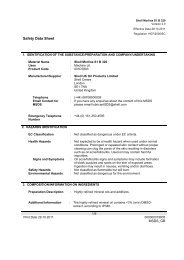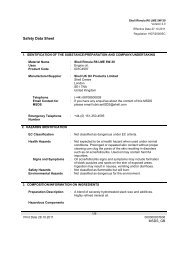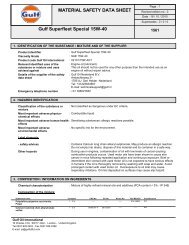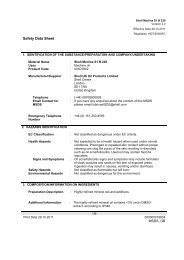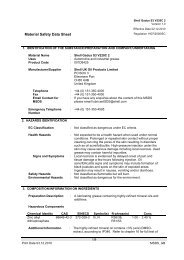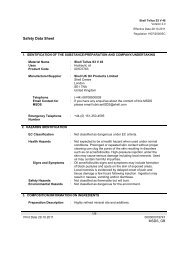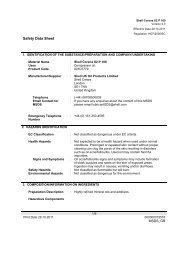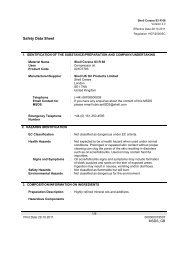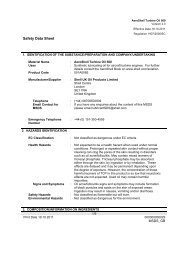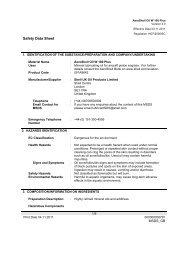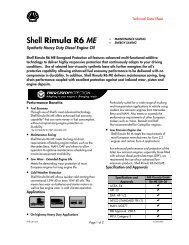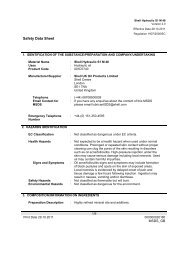Safety datasheet - OilsandStuff
Safety datasheet - OilsandStuff
Safety datasheet - OilsandStuff
You also want an ePaper? Increase the reach of your titles
YUMPU automatically turns print PDFs into web optimized ePapers that Google loves.
<strong>Safety</strong> Data Sheet<br />
Shell Donax TA (D-21666)<br />
Version 2.0<br />
Effective Date 18.10.2011<br />
Regulation 1907/2006/EC<br />
8. EXPOSURE CONTROLS/PERSONAL PROTECTION<br />
If the American Conference of Governmental Industrial Hygienists (ACGIH) value is provided on<br />
this document, it is provided for information only.<br />
Occupational Exposure Limits<br />
Material Source Type ppm mg/m3 Notation<br />
Oil mist, mineral ACGIH TWA<br />
[Inhalable<br />
fraction.]<br />
5 mg/m3<br />
Exposure Controls : The level of protection and types of controls necessary will vary<br />
depending upon potential exposure conditions. Select controls<br />
based on a risk assessment of local circumstances.<br />
Appropriate measures include: Adequate ventilation to control<br />
airborne concentrations. Where material is heated, sprayed or<br />
mist formed, there is greater potential for airborne<br />
concentrations to be generated.<br />
Personal Protective<br />
Equipment<br />
: Personal protective equipment (PPE) should meet<br />
recommended national standards. Check with PPE suppliers.<br />
Respiratory Protection : No respiratory protection is ordinarily required under normal<br />
conditions of use. In accordance with good industrial hygiene<br />
practices, precautions should be taken to avoid breathing of<br />
material. If engineering controls do not maintain airborne<br />
concentrations to a level which is adequate to protect worker<br />
health, select respiratory protection equipment suitable for the<br />
specific conditions of use and meeting relevant legislation.<br />
Check with respiratory protective equipment suppliers. Where<br />
air-filtering respirators are suitable, select an appropriate<br />
combination of mask and filter. Select a filter suitable for<br />
combined particulate/organic gases and vapours [boiling point<br />
>65 °C (149 °F)] meeting EN14387.<br />
Hand Protection : Where hand contact with the product may occur the use of<br />
gloves approved to relevant standards (e.g. Europe: EN374,<br />
US: F739) made from the following materials may provide<br />
suitable chemical protection: PVC, neoprene or nitrile rubber<br />
gloves. Suitability and durability of a glove is dependent on<br />
usage, e.g. frequency and duration of contact, chemical<br />
resistance of glove material, glove thickness, dexterity. Always<br />
seek advice from glove suppliers. Contaminated gloves should<br />
be replaced. Personal hygiene is a key element of effective<br />
4/9<br />
Print Date 19.10.2011 000000003448<br />
MSDS_GB



